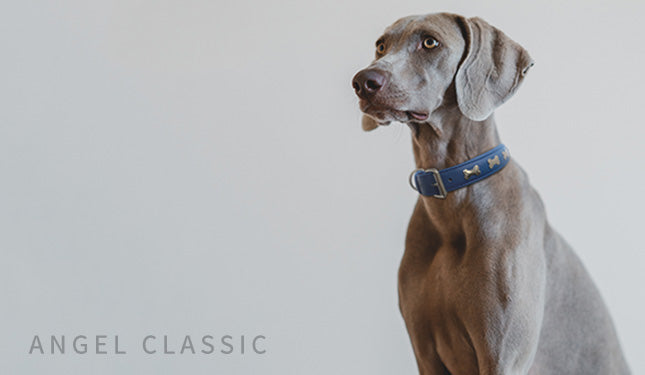How Tight Should a Dog Collar Be?

As responsible pet owners, we strive to ensure the well-being and comfort of our furry companions. One essential aspect of canine care is choosing the right collar and, more importantly, determining how tight it should be. Striking the perfect balance between snugness and comfort is important for your dog's safety and happiness.
A dog collar serves various functions, including holding identification tags, providing a point of attachment for a leash, and, in some cases, displaying a dog's personality with stylish designs.
Snug Fit
The first step in ensuring the correct tightness is accurate measurement. Whether opting for the versatile Alpine dog collar or the stylish Spiked dog collar, measuring your dog's neck circumference is important. Use a flexible tape measure to determine your dog's neck circumference. This allows for a snug fit without being too tight, preventing discomfort or potential injury.
Safety First
A collar that is too tight can lead to numerous health issues for your dog. It may cause chafing, skin irritation, or even difficulty breathing. Conversely, a collar that is too loose poses risks, as your dog may slip out of it or become entangled in objects, putting them in harm's way. Striking the right balance is essential for your dog's safety and well-being.
Consider the Type of Collar
Different types of dog collars have varying degrees of tightness requirements. For example, a flat collar, commonly used for identification purposes, should be snug enough to prevent slipping over the head but not so tight that it causes discomfort. Martingale leather collars, often used for training, should be fitted so they tighten slightly when pulled but still allow for easy breathing and movement.
Regular Check-ups
As your dog grows or changes in weight, their collar needs may evolve. Puppies, in particular, may outgrow their collars quickly, so keeping an eye on their development is essential to maintaining a proper fit.
Watch for Signs of Discomfort
Dogs may not express their discomfort verbally, so it is essential to observe their behavior. If your dog is constantly scratching at the collar, rubbing their neck against objects, or showing signs of distress, the collar may be too tight. On the other hand, a loose collar may lead to excessive slipping or attempts to remove it, indicating a need for adjustment.
Give your dog the personality they deserve with smooth and comfortable Alpine or Spiked dog collars. Explore online today!
Enhance Your Pet’s Style with Leather Dog Collars
Choosing the right tightness for your dog's collar is an important aspect of responsible pet ownership. Our well-fitted leather dog collars not only serve their practical purpose but also contribute to a healthy life for your canine companion. Contact us today for genuine leather dog collars.







